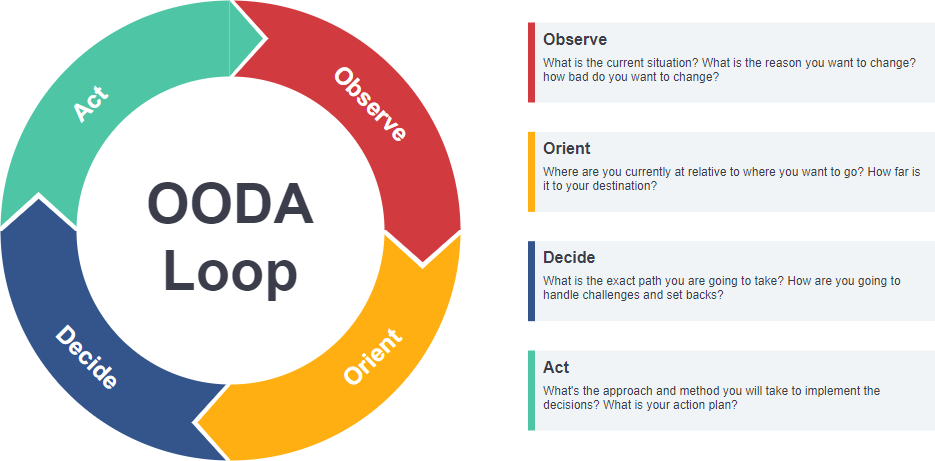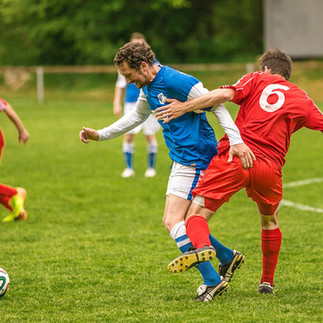Introduction
In the realm of sports performance and psychology, understanding the interplay between various dimensions is crucial for optimizing performance. One such framework that provides a holistic view is the 4-Coactive Model. This model has 4 macro principles: technical, tactical, physical, and psychological, each playing a vital role in an individual's or team's success. Drawing insights from Fergus Connolly's book "Game Changer," let's explore each dimension and how they intertwine to enhance player performance.
Technical
The first macro principle encompasses the skills and techniques required to excel in a particular sport or activity. Whether it's mastering the perfect golf swing, executing precise footwork in soccer, or perfecting a backhand in tennis, technical proficiency forms the foundation of athletic prowess. Athletes spend countless hours honing these skills through deliberate practice and feedback, striving for precision and consistency in their movements.
Sports are inherently chaotic, with various uncontrollable factors like opponents, environmental conditions, and game dynamics. So, how can we prepare for such unpredictability? The aim is to empower athletes with the skills to navigate this dynamic environment, enabling them to adapt and express themselves effectively within the contextual elements of the game, ultimately leading to success.
Spatial Awareness & the OODA Loop
In sports, understanding one's position on the field and how it relates to teammates and opponents is crucial for effective decision-making. This process aligns with the first step of the OODA loop: observation. Athletes must observe their surroundings, including the movements of others and the dynamics of the game, to gather relevant information. With this observation comes the need for spatial awareness, which enables players to manipulate the available space. This spatial awareness is similar to the orientation phase of the OODA loop, where athletes interpret and analyze the observed information to understand the implications and dynamics of the situation. Moreover, athletes often demonstrate what is commonly referred to as 'vision' on the field, which is their ability to perceive and process visual information to inform their decisions. This aligns with the decision-making phase of the OODA loop, where athletes weigh their options and select the most appropriate course of action based on their observations and orientation. Finally, athletes must act upon their decisions by executing the chosen course of action, which corresponds to the action phase of the OODA loop. By continuously cycling through the OODA loop—observing, orienting, deciding, and acting—athletes can adapt to the ever-changing dynamics of the game, make effective decisions, and maintain a competitive edge.
Tactical
While technical skills are essential, tactical prowess separates good athletes from great ones. The tactical dimension involves understanding the strategic aspects of the game, such as decision-making, positioning, and game awareness. It's about anticipating opponents' moves, exploiting weaknesses, and adapting strategies on the fly. A keen tactical mind can turn the tide of a game, even in the face of superior technical ability.
Tactical Preparation & Decision Making
Sometimes, it's evident when athletes aren't clear about their roles on the field. This confusion can significantly impact the team's overall performance and make success even harder to achieve. When coaches assess such situations, they must realize that the problem might not stem from physical limitations but rather from a lack of tactical understanding or decision-making ability. As players progress to higher levels of the game, any deficiencies in their tactical skills become more apparent. It's not sufficient for a player to rely solely on physical ability; understanding the tactical aspects of the game is equally crucial for success in high-performance sports.
Enhancing player decision-making on the field is a skill that can be developed but is frequently neglected. Effective communication is essential for making optimal decisions in the heat of the moment and then being able to execute them successfully. By incorporating this concept into game-like scenarios, coaches can create high-quality training sessions aimed at improving this critical aspect of individual and team performance.
Physical
Physical preparation involves enhancing the athlete's physical capabilities, addressing three key systems crucial for meeting the demands of the sport. These systems are interdependent and complementary, working together to optimize performance.
Biomechanics – The physical structure and movement of the athlete
Bioenergetics – Ability of the cardio-respiratory system and energy substrate system to fuel an athlete for training and competition.
Biodynamics – Nervous system reception and response governed by the macro nervous system (central, peripheral, autonomous) and the hormone regulation of the bio transformational system, pituitary-adrenal, cortisol-immune system.
Sport Morphology & Programming
When initially learning a new skill, it's essential to keep the volume low to maximize learning potential. The focus should be on quality over quantity, with the understanding that more is not always better—better is better. Once the skill is mastered, density and volume can be increased to further refine technique and enhance proficiency. However, quality should never be compromised, as it remains the top priority. Maintaining high-quality repetitions is crucial for retaining and improving skills. In terms of density and frequency, it's important to keep density relatively low when adapting to a new skill, gradually increasing it as proficiency develops. The frequency of practice sessions should be adjusted based on the specific developmental focus of the skill, ensuring optimal progress and adaptation. Ultimately, by strategically balancing volume, intensity, density, and frequency, athletes and coaches can facilitate effective skill acquisition and long-term performance enhancement.
Physical Performance Qualities
Aerobic Power
Aerobic Capacity
Anaerobic Capacity
Anaerobic Power
Explosiveness
Isometric Contraction
Maximum Strength
Neural Power
Speed-Endurance
Speed-Strength
Strength-Endurance
Strength-Speed
Contact
In many sports, physical contact or collisions are common, thus making it essential to build up a tolerance to the demands of the sport. Adapting to the environment in which the sport is played is pivotal. It's not just about preparing for physical contact but also for other forms of contact, such as ground contact from sprinting, jumping, or environmental factors like the softness or hardness of the ground.
Psychological
The psychological preparation dives into the mental aspects of performance. Confidence, focus, resilience, motivation, and emotional regulation are key factors that influence an athlete's ability to perform under pressure. However, we can simplify these into three main categories: Spiritual, Emotional, and Cognitive.
Spiritual
The moral and ethical framework that underpins spirituality often develops gradually, particularly among young players who are still discovering their place in the world. Spirituality encompasses an individual's sense of identity, purpose, and connection to something greater than themselves, and finding clarity in their spiritual beliefs can provide a sense of peace and direction, aiding in their integration into team dynamics. For players to fully engage and feel valued within the team, they must connect with a personal sense of purpose and identity, understanding why they commit to their daily efforts, what they bring to the team, and how they can positively impact performance. Ultimately, fostering a sense of meaning, connection, and control—addressing questions of purpose, contribution, and influence—is essential for players to feel invested, valued, and motivated within the team environment.
Emotional
Effectively handling emotions both on and off the field is a crucial aspect of achieving peak performance and can significantly impact psychological strength and capabilities. The decision-making process of a player is not only influenced by past experiences and immediate observations but also intricately linked to their emotional intelligence and ability to regulate emotions. James Smith refers to this concept as having a “neutral brain” one that is not too aroused or halted. The verbal and nonverbal communication between coaches and players establishes the emotional backdrop for every interaction, further emphasizing the importance of emotional management in sports.
“Neutral brain state is the most advantaged brain state an athlete can be in pre- and during competition.” – James Smith
Cognitive
Cognition refers to a player's ability to concentrate, maintain focus, and mentally handle information during practices and games. Both coaches and athletes need to acknowledge the mental strain that builds up from practices, games, and other life events outside of sports. Effectively managing these pressures is crucial to ensure athletes are mentally prepared and sharp. The capacity to focus is significantly affected by stress and the overall health of the athlete, therefore learning to manage the cognitive workload can be of great benefit to the success of the individual and team.
Interplay and Integration
What makes the 4-Coactive Model truly powerful is the recognition that these principles do not operate in isolation. Instead, they interact and influence each other in dynamic ways. For example, technical proficiency enables athletes to execute tactical strategies more effectively. A strong physical foundation provides the stamina and athleticism needed to sustain peak performance throughout a match or competition. Meanwhile, psychological factors such as confidence and focus can enhance technical execution and decision-making under pressure. When designing training programs, it is best to keep it systemic, in that you can integrate all four dimensions synergistically.
Conclusion
In the complex world of sports and performance, the 4-Coactive Model emerges as a comprehensive framework, shedding light on the macro principles crucial for optimizing athletic performance. By exploring the technical, tactical, physical, and psychological preparation, athletes and coaches gain a deeper understanding of the multifaceted nature of success in sports. From mastering technical skills to navigating tactical strategies, from building physical resilience to honing psychological fortitude, every aspect plays a vital role in shaping an athlete's journey to excellence.

About the author:
Nathan Albright is the owner of XI Sports Performance, where he works with youth, high school, and college-level athletes offering a wide variety of training with various sports, including Soccer, Football, Basketball, Baseball, Volleyball, and more. Nathan has a BSc. in Exercise Kinesiology from the University of Toledo, and currently resides in Northwest Ohio.


















